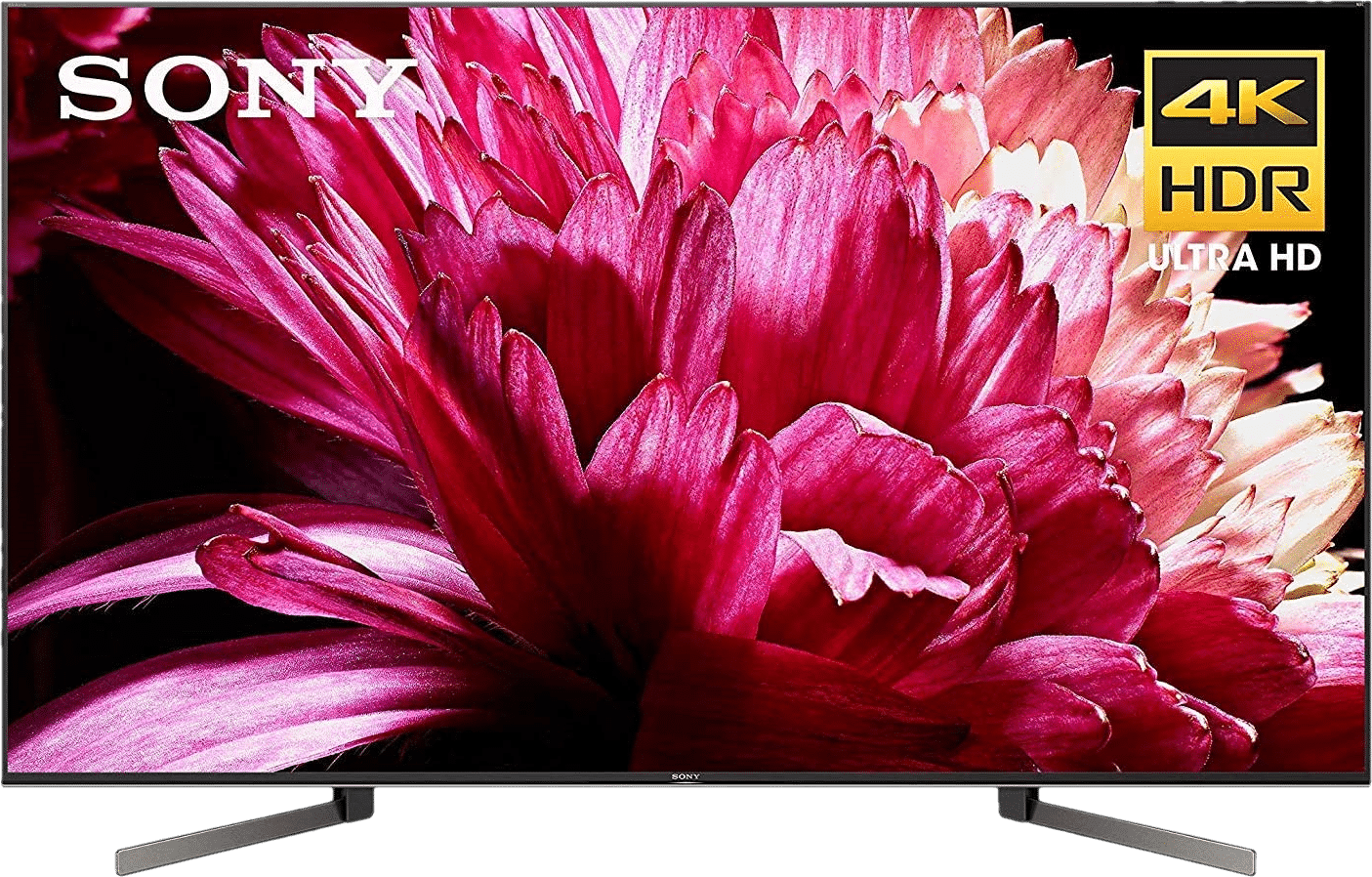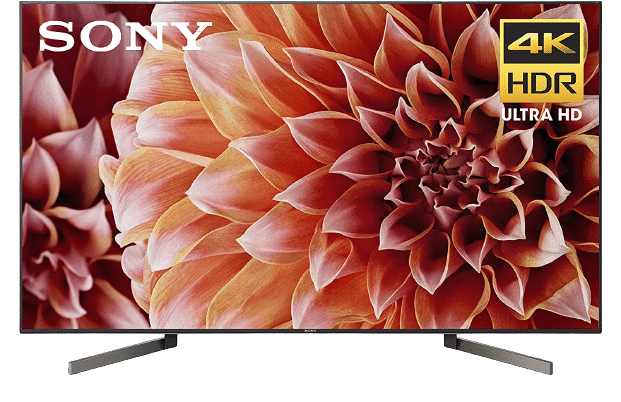Sony is a great brand when it comes to TVs, but which is the better option between the X900F vs X950G? It’s hard to know without testing the units for yourself, so our experts have done the hard part for you and assessed both TVs for this in-depth review.
X900F vs X950G
Features of X900F and X950G
Object-Based Resolution
A proprietary feature from Sony Series pattern, Object-based Super Resolution technology works by identifying different objects on-screen and enhancing their resolution individually. As such, you’re able to get great detail from single smaller elements instead of the picture as a whole.
Unfortunately, only the Sony X950G acoustic multi audio speaker has the Object-Based Super Resolution pro feature. This technology is absent in the Sony X900F, and the disparity shows in our tests. The Sony X950G was able to generate pro, highly accurate and good detailed images and video, including a more vivid representation for movies and games.
However, both Sony series do use good resolution in 4K X-Reality Pro and Dual Database Processing. As for the Sony X900F, it still provides great clarity with excellent refresh rate technology. The lack of the acoustic multi audio speaker object-based resolution technology feature may not be a problem with some users, so if you’re on a budget, it’s always a good, cheaper choice.
But objectively, Sony X900F vs Sony X950G is won by the Sony X950G due to its native contrast ratio resolution technology.
Picture Engine & Processor
The processor of the Sony X950G is also of a higher caliber than the Sony X900F. To be more specific, the Sony X950G LED TV picture screen has the resolution 4K HDR Processor X1 Ultimate while the Sony X900F is equipped with the 4K HDR Processor X1 Extreme.
The distinction with the X1 Extreme can be seen in relation to the Object-Based Super Resolution technology we previously discussed, since this pro feature is the newer addition to the 1080p HDR X1 Ultimate processor. In our Sony 950G reviews, the pictures are more accurate, and the native contrast ratio is more evident with Sony X950G as well.
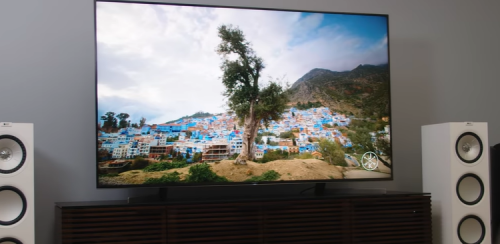
However, the Sony X900F’s 4K HDR X1 Extreme technology is a decent processor on its own. The images are clear and the gradient color gamut is excellent, and any normal user will find it good enough to use for most purposes. It’s just that compared to the pro HDR X1 Ultimate, the HDR X1 Extreme has its shortcomings.
Overall, with great refresh rate technology, providing higher clarity and real detail, we find that the HDR X1 Ultimate on the Sony X950G LED TV picture screen technology can deliver a more enjoyable, 1080p viewing experience.
X-Wide Angle
Having a wider and fine LED viewing angle makes Netflix TV screen shows a bit more immersive. Sony has picked up on this and has equipped the Sony X950G with X-Wide Angle technology. This applies only to the 75-inch and 85-inch models, though, which is understandable.
With X-Wide Angle picture quality, you can get an accurate view of the larger screen even when you’re looking from the side. This is of use if you have movie nights with family and friends. Due to the wider viewing angle, everyone can clearly see the picture even if they’re sitting on the side of the couch.
There is a slight optical downside to this, however. While the X-Wide Angle picture quality technology does improve the coverage of a VA panel, it also reduces the native contrast ratio. But for the average viewer, this might not be a major deal. We’ll further discuss the native contrast ratio later.
For the sake of this full comparison, the Sony X950G LED TV picture screen still wins since the wide-angle technology feature isn’t available in the latter. The only catch is that smaller models such as the XBR65, X950G Sony don’t use this, so you do need to buy the bigger screen sizes to get the X-Wide Angle technologies.
For better viewing experience, you can even place your TV on the wall without studs, as well.
Speaker Systems
Of course, fine visuals are nothing without good sound technology. In our speaker tests, both the Sony X900F and the Sony X950G deliver great audio just like the sound quality of Samsung QN900A series TVs, but their speaker systems’ variation produces a noticeable discrepancy.
While both use a 20W audio speaker power output, the type of speaker they use is different. The Sony X950G LED TV picture screen has an Acoustic Multi Audio speaker system, while a Bass Reflex Speaker powers the Sony X900F.
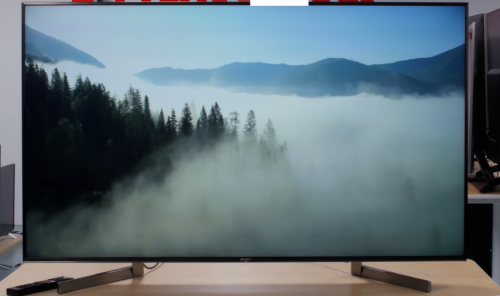
From that alone, it’s evident that the Sony X950G series can produce a bit more immersive and well-detailed sound. Plus, this TV is compatible with Dolby Atmos as well, which again, is absent in the Sony X900F.
In addition to that, the Sony X950G has two sound-positioning tweeters at the back of the TV set. This further improves the sound quality in any type of content, especially in the high-frequency dynamic range (HDR content).
With that in mind, you will get a bit more immersive sound experience with the Sony X950G acoustic multi audio speaker technology. Our experts’ tests reflect a good, smooth acoustic multi audio speaker performance, which completes the overall viewing experience improvement too.
Brightness and Color Performance
When it comes to picture brightness, the Sony X950G is a bit more solid performer. The peak brightness of the X950G is higher, but the local dimming can still vary depending on what’s onscreen sizes and the window size as well.
However, that doesn’t mean that the Sony X900F sucks despite its local dimming technology being darker. In fact, it has a better native contrast ratio overall, especially when compared to the 75-inch and 85-inch models of the Sony X950G.
With a higher and dynamic contrast ratio, the TV picture quality can produce blacker blacks. The picture angle quality would also be better in a dark mode room. Both pro models make a good performance in dark rooms especially, but they’re only the same compared to smaller screen sizes like the XBR65X950G.
We mentioned that the 75-inch and 85-inch models of the Sony X950G have the X-Wide angle technology, and this makes the contrast ratio of Sony X950G vs Sony X900F lower. As such, the blacks won’t be as deep.
Still, it’s important to note that their local dimming features boost the contrast ratio nicely. In our tests, the two models are pretty similar, although the local dimming performance might not wholly eradicate some blooming on the picture.
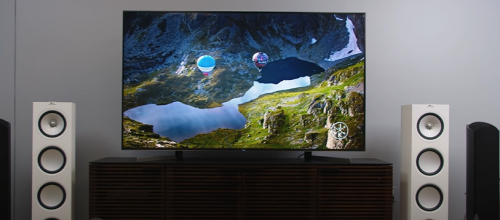
Nevertheless, compared to devices with an edge-lit backlight, the local dimming of either Sony model is much better.
Meanwhile, when it comes to color reproduction, both Sony screen options have TriLuminos display. However, we find that the wide color gamut of the Sony X950G lacks compared to the Sony X900F reviews, despite being the newer model between the two.
This is mainly due to the panel variance settings, but both models are still great for pro Dolby Vision, Dolby Atmos and full HDR content — which we’ll discuss a bit more later.
The color volume on both models is good, but we find the Sony X900F better in this aspect. The variation in color mapping might not be too distinct for the average viewer, though, since both units can deliver a wide color gamut at its full brightness dynamic range.
When it comes to the color gradient, both products can deliver a smooth 10-bit color. There are some flaws in colors such as gray and dark green, but overall, there is no visible color banding on either model and the colors are produced well.
Going back to our full settings comparison, the pro Sony X900F wins this round due to its high native color mapping contrast ratio and better screen color volume mode — making it perform better with full HDR images [1].
(Is your Sony television giving you a hard time? Well, you can check these quick fixes for common Sony TV issues here)
Remote Control
The remote control in both models has pretty much the same functionalities, including the volume button, navigation button, common button, buttons for Netflix movies and Google Play Apps, and the Google Voice Assistant Button.
Their important distinction in the remote control set is supported in the design look. With the Sony X900F having a larger remote control and tactile rubber buttons. In comparison, the distinction is that the X950G’s remote control is sleeker. It is also supported with a black and metallic look, which is a better fit for such a modern TV interface model remote.
Nevertheless, both devices are equipped with Sony’s Voice Remote Control. Voice navigation is possible via the built-in microphone, and you can also link both remotes to the TV by using Bluetooth.
In relation to control and standard HDMI input ports, both the Sony X900F LED TV and the Sony X950G also have 4 USB ports and HDMI input ports. They include USB input, HDCP 2.3, CEC, and HDMI 2.1 and HDMI 2.0 Full Bandwidth input ports as well. There is no distinction between the HDMI input ports between the devices.
Circling back to our remote control distinction comparison, we tip our hats to the X950G because of its good remote interface design supported.
Better Motion Handling
Motion handling refers to how smooth the model can manage fast paced pictures. Both are capable of handling motion blur nicely. Truth be told, their performances are almost similar to each other when the picture is compared, due to their superb pixel response time.
If there are fast moving objects on the LCD screen, content like cars racing, for instance, the slight ghosting trail color mapping is barely noticeable. Visible color mapping blurs are likely caused by 60fps persistence, but there’s an optional Black Frame Insertion (BFI) available to solve that as well.
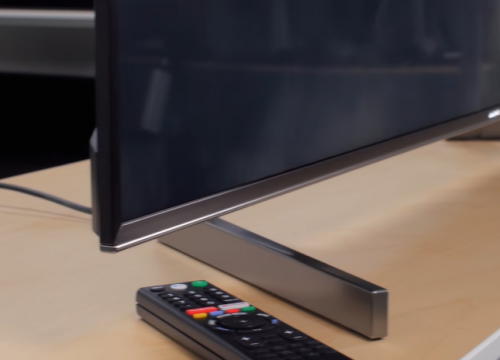
Unfortunately, the BFI mode can make the backlight flicker at 120 Hz despite reducing the blur due to the 60 fps persistence. Then again, this BFI is still optional, so the general decision is up to you depending on what setting you’re comfortable with.
On the other hand, the picture native refresh rate on the two models is at 120 Hz. This refresh rate allows them to interpolate content with a lower frame rate and a higher screen frame rate nicely.
Overall, regardless of the frame rate content, the 120 Hz refresh rate makes the picture viewing experience smoother. Whether you’re following 24p Blu-Ray, 24p satellite box, or 60p signal movies from Netflix, both the X950G and the Sony X900F have excellent 120 Hz motion handling due to the screen refresh rate.
HDR Experience
The ability to deliver high dynamic range (HDR) content is a must for modern screens, and fortunately, these two Sony series models provide an excellent HDR experience and color mapping. It is almost similar to the Q60A series flatscreen TVs made by Samsung.
It has been mentioned that these model options have a wide color gamut and a superb contrast ratio. With the color mapping, high dynamic range images are a bit more accurate and detailed compared to lower-end options. The blacks on the screen are also deep, making the shadows color mapping pop a bit more as well.
The peak brightness on both units is also good, although we must say that the Sony X900F is at a slight disadvantage since its peak is less than 1000 nits. Essentially, that means that high dynamic range color mapping images don’t appear as bright as intended.
In comparison, the Sony X950G version reaches a peak brightness that’s higher than 1000 nits, making the highlights shine through. To make the long story short, the color mapping shadows are darker in the Sony X900F, but the highlights are brighter with the X950G.
In terms of color gamut reproduction, both models cover more than 93% of DCI P3 color space. This allows HDR content to be displayed accurately as well. And to reiterate a previous point, both model options also produce an excellent color gradient. This further improves the detail and smoothness you get in high dynamic range images as well.
Smart TV Experience
Another similarity between the Sony X950G and the Sony X900F is that they both run on the Android TV platform. However, being the older model version, the Sony X900F runs on Android 7.0 Nougat while the newer X950G runs Android 8.0 Oreo — but more on this in a bit.
If you’re not new to the smart TV scene, you’ll know that Android TV remains one of the most amazing platforms out there. This is primarily because of apps like YouTube, Web Browser, Amazon Videos, and Netflix movies. There’s a whole array of pre-installed apps, but these apps are the most common ones.
Additionally, you can access thousands of games, apps, and other content from the Google Play Store. With the Android TV platform, you can download these content to your TV in UHD as well, so you can get the most out of it other than for blu-ray video shared via USB and UHD shows.
Other than that, Android TV also has Google Voice Assistant. As such, you can control and change your Sony TV settings version with a single voice command or a series of instructions.
Now, let’s go back to the variation viewed in Android versions between the X950G and the Sony X900F. Compared to the older Nougat in the Sony X900F, Android 8.0 Oreo provides a smoother operation in our experience. It’s a bit more user-friendly as well, so beginners wouldn’t have a hard time navigating this Android TV platform. And of course, Android 8 is faster, too.
However, our experts agree that Android TV may still not be the easiest platform to use out there. Still, just comparing to its previous versions, the Android 8.0 has a much friendlier interface compatible with Dolby Atmos.
Generally speaking, the distinction between the TVs is that the Android 8.0 version has a faster, smoother, and more consistent performance compared to the Android 7.0. This makes the Sony X950G the winner in terms of the good smart TV experience.
For impressive display, the Sony X80J with 4K X-Reality Pro feature will give the best viewing experience.
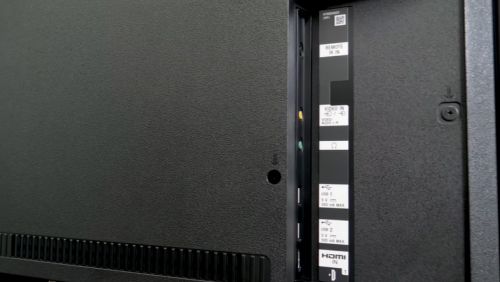
Price Difference
In most model options we buy, whether online or in store, we always look at the difference in the price. Big screen options with 4K HDR Processor X1 Ultimate are no exception, especially since they don’t exactly come with a cheap price tag.
At this point in this review, you’ve probably already guessed that the Sony X950G is more expensive than the Sony X900F. It’s the newer model with upgraded features and 4K HDR Processor X1 Ultimate, so this doesn’t exactly come as a surprise.
If you’re on a budget, however, the Sony X900F is a good smart TV option in itself. It might not have the 4K HDR X1 Ultimate processor, acoustic multi audio speaker, Dolby Atmos compatibility or the most amazing peak brightness, but it still provides excellent high-frequency dynamic range content, superb Dolby Vision capability, and similar functions.
So, if you want the unit with a lower price offer, go with the Sony X900F.
(Looking for a soundbar to come with your new TV? See which between the Bose Soundbar 500 and 700 is the better device)
Overall Performance
To sum things up, we’ve compared the overall performance of the Sony X900F Android TV and the X950G depending on the content you can use.
To get the best experience out of your Sony TVs, you can choose to hang them on your wall. Here are the most tested ways on how to hang a TV on a brick wall. Read next!
For Watching Sports
Sports would generally have fast-paced moments, which means the TV must use good motion handling. As we’ve discussed, the motion handling on both options is equally superior compared to other models, so either TV is an ideal choice for smooth fast-moving pictures.
We must also take into consideration the difference in the environment displayed when we’re following sports. Usually, this type of content is watched in a bright room, together with family and friends. Peak brightness color mapping is a factor in this.
With a higher peak brightness, the X950G would be able to handle the glare in a brighter room. And if you decide to buy the larger smart TV models (not the XBR65X950G and smaller), you will also enjoy a wider viewing angle — perfect if you’re following sports with a lot of friends, in a brighter room.
Overall, since the Sony X950G version is brighter and has a wide angle, we deem it as the ideal use in this case.
For Watching Movies
Contrary to how we watch sports content, blu-ray movies are preferably watched in dark rooms. A good contrast ratio is needed in this regard. Of course, while both Sony series have good dynamic contrast, local dimming performance, HDR, and motion handling, we prefer the Sony X900F version because it can produce deeper blacks.
That being said, the black color mapping uniformity in the Sony X950G is actually a bit better. However, because the black colors in the Sony X900F are blacker, the shadows in video have more depth.
For Gaming
When it comes to gaming, the performance of the Sony X900F and X950G are on par with each other. The resolution 4k UHD colors are great and the picture quality is excellent.
However, we found a small difference in the input lag on the X950G which is slightly lower. In reality, though, the difference isn’t that noticeable when you’re playing 4K HDR games.
If you’re in game mode, playing 1080p games, on the other hand, the difference is large. With the low input lag in the X950G, 1080p games are more responsive compared to the Sony X900F.
We played 1080p games on the Sony X900F and the input lag was evident in fast-paced games. The streaming input lag is quite upsetting while you play. But if you’re just playing casual 1080p games on the Sony X900F, you’ll find the performance good or pretty decent.
(Want to experience an impressive sound quality for your television? Then, check out our quick guide on how to integrate external speakers to your LG TV here)
FAQ
Is Sony X950G better than X900F?
Yes, the Sony X950G is better than X900F. It has a better processor, object-based super resolution, higher peak brightness mode, more reliable motion handling, higher-quality speakers, and a wider viewing angle in its 75 and 85-inch models.
Overall Winner: Sony X950G
The X950G offers 4K HDR X1 Ultimate processor, Object-Based Super Resolution technology, X-Wide Viewing Angle in larger digital screen models, better local dimming, a higher peak brightness mode, low input lag, and superb 4K UHD/HDR quality content.
For more tv comparisons, you can check the pages below:

